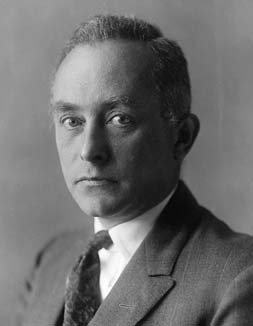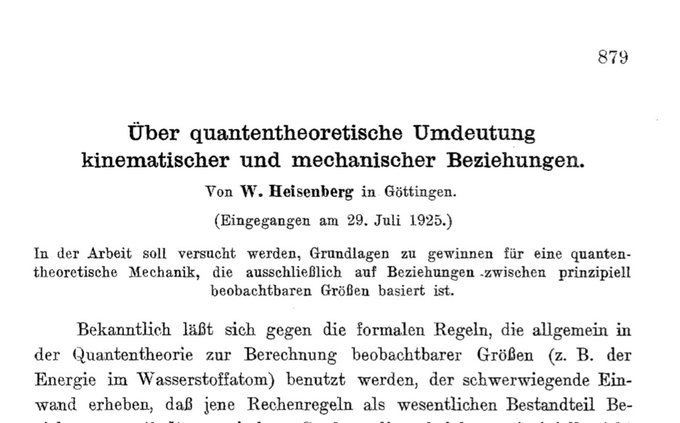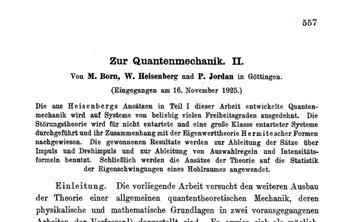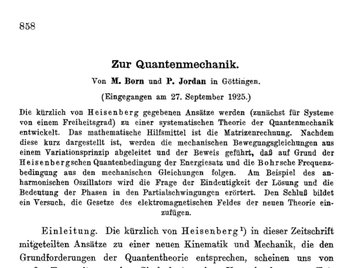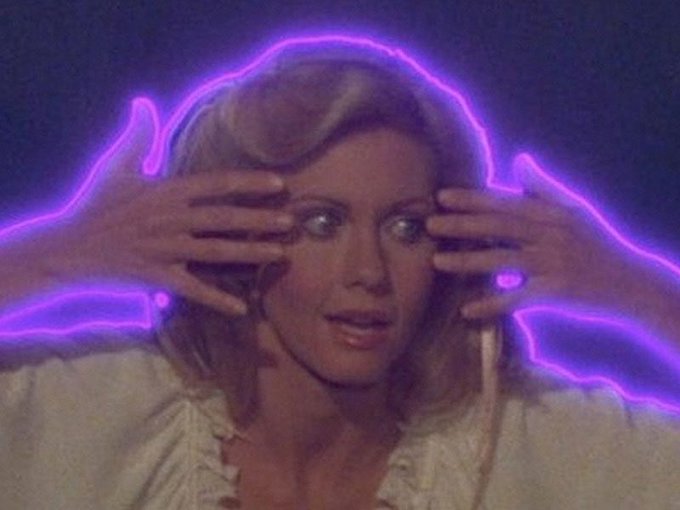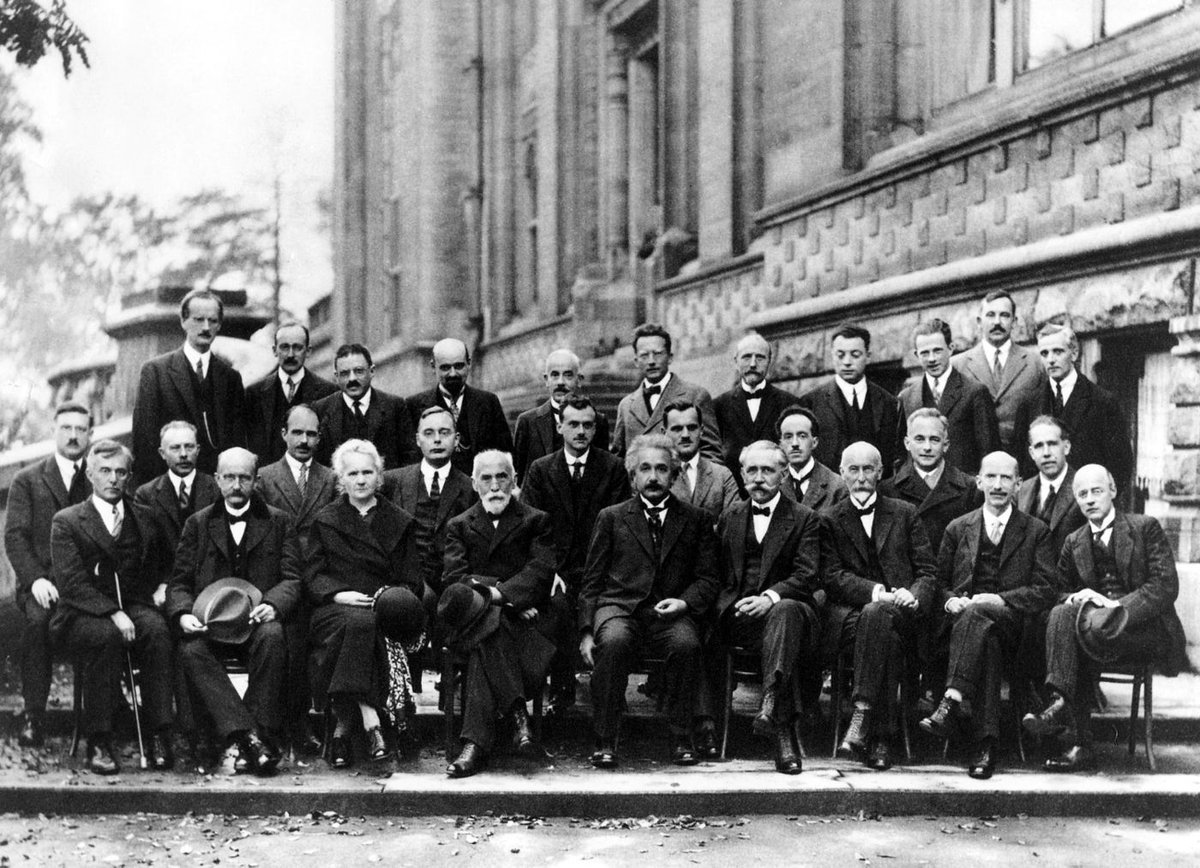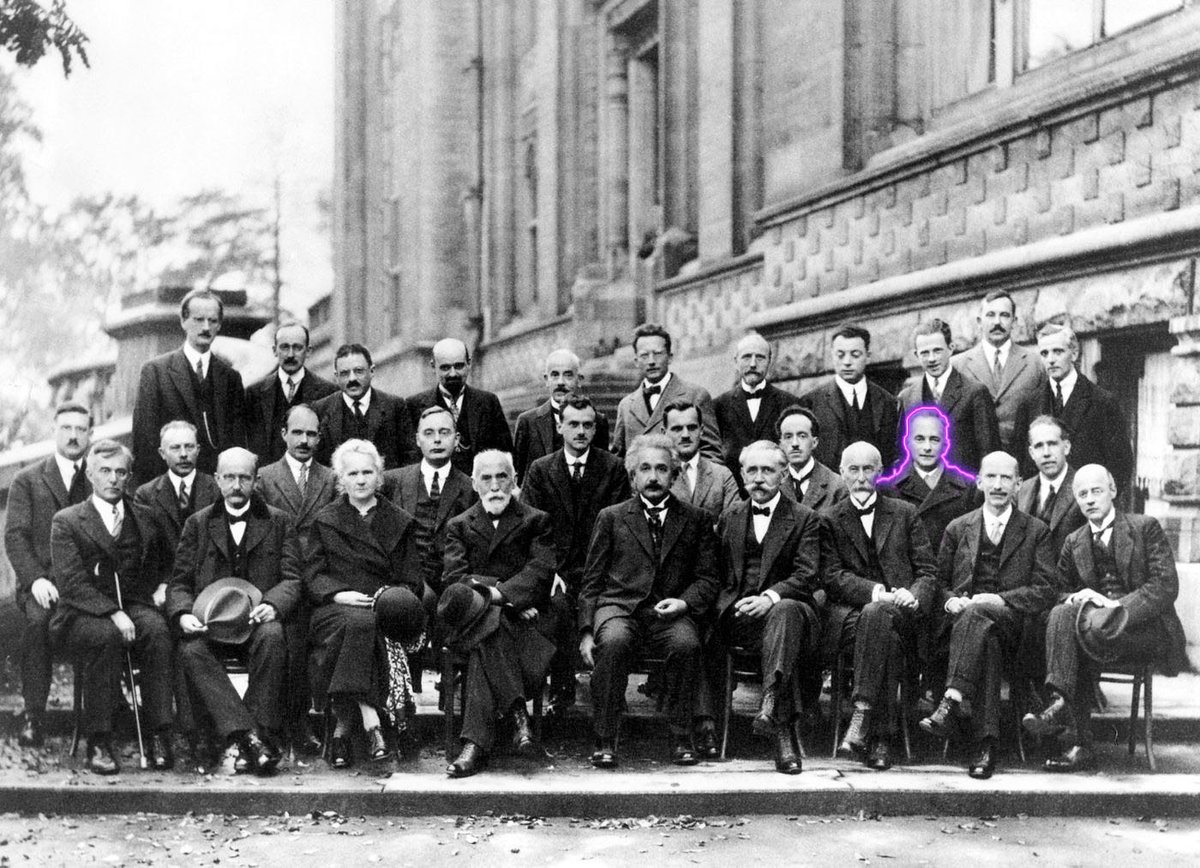Physicist Max Born was...born... #OTD in 1882. In 1926 he formulated a rule for the statistical likelihood of a measurement on a quantum system yielding a particular outcome. Born’s rule says the probability is the square of an amplitude obtained from the system’s wave function.
I will tell you right now: This thread is going to end up somewhere you probably don't expect.
Max Born was one of the leading figures in the transition from the "old quantum theory" to the theory we now call "quantum mechanics." Indeed, it was Born who first used the term in print, in 1924, as a contrast to "classical mechanics."
In a footnote of that paper, Born thanks a young assistant:
"I am also greatly indebted to Mr. W. Heisenberg for much advice and help with the calculations."
"I am also greatly indebted to Mr. W. Heisenberg for much advice and help with the calculations."
The following year (1925), Born, Heisenberg, and Jordan develop the "matrix mechanics" formulation of QM. First a paper by Heisenberg, then one by Born and Jordan, and finally one by all three.
When Born read Heisenberg's paper, he recognized matrix multiplication at work in certain formulas. Matrices were practically unknown to physicists at the time, but Born was familiar with them from work with Minkowski almost 20 years earlier.
The Born-Jordan paper recast Heisenberg's ideas in matrix language, and then the Born-Jordan-Heisenberg paper brought it all together as a coherent formulation of quantum mechanics.
In the first section of the BJH paper, Born establishes one of the most familiar results of QM. Several years later he remarked "I shall never forget the thrill I experienced when I succeeded in condensing Heisenberg’s ideas on quantum conditions into the mysterious equation: "
In 1926 Erwin Schrödinger published his complementary wave mechanics formulation of quantum mechanics. He called it "undulatory mechanics," which I really like.
The wave and matrix formulations were eventually shown to be equivalent. At first, Born didn't like Schrödinger's approach –– he was sure that electrons and other particles were quantum mechanically "fuzzy," but particles nonetheless.
But Born soon found that Schödinger's wave mechanics was much better suited for certain scattering calculations that he wanted to explore.
The only way he could reconcile these wavy calculations with the particulate nature of scattered electrons was to obtain the wave function Ψ for a scattered state, and then interpret |Ψ|² as the probability that the electron is scattered that way.
This is a deep and inherently statistical statement! Each time you perform your electron scattering experiment, if you check a particular scattering direction you will either detect the electron or you won't. The indeterminacy of quantum mechanics tells you the result is random.
Now perform that experiment many, many times, checking that particular scattering direction each time. If Ψ is the amplitude for scattering in that direction, you will find that you detected the electron with a statistical frequency close to |Ψ|².
A lot of quantum mechanics is there in Born's rule! Classically, two possibilities with probabilities p₁ and p₂ have total probability p₁+p₂. Quantum mechanically, if the wave function is Ψ₁ + Ψ₂ then the probability is: |Ψ₁+Ψ₂|² = |Ψ₁|² + |Ψ₂|² + (Ψ₁*)Ψ₂ + Ψ₁(Ψ₂*)
This is why Young's double-slit experiment with electrons builds up a wavy interference pattern. The probability an electron is detected at a point on the screen involves a probability for each slit, as well as those two possibilities interfering with each other.
Born's interpretation of the wave function was published in 1926. The emerging probabilistic picture of QM was troubling to Einstein, prompting this well known (often paraphrased) passage in a letter he wrote to Born in December of that year.
Like many Jewish academics, Born was suspended without pay when the Nazis came to power. He fled Germany, eventually taking a position at Cambridge.
And it is here, in England, where our real story begins.
Because it is in Cambridge that Max Born's daughter Irene meets and marries a Welsh gentleman named Brinley Newton-John.
In 1948 the couple have a daughter.
They name their daughter "Olivia."
Yes, that is correct. Max Born, pioneer of quantum mechanics, is the grandfather of Olivia Newton-John.
Image: Xanadu (1980, Director: Robert Greenwald)
Image: Xanadu (1980, Director: Robert Greenwald)
This can't be ignored when we talk about Born's various contributions. Arguably, his interpretation of the wave function is the most profound. ONJ is pretty good, too. If you made me rank them that's probably my 1-2. But if you want to flip the order I'd listen to your argument.
Happy birthday to Max Born. There he is at the Solvay Conference in 1927, second from the right in the middle row, sitting between de Broglie and Bohr.
Photo: Benjamin Couprie, Institut International de Physique de Solvay
Photo: Benjamin Couprie, Institut International de Physique de Solvay
Sorry, I forgot to tag @olivianj.

 Read on Twitter
Read on Twitter